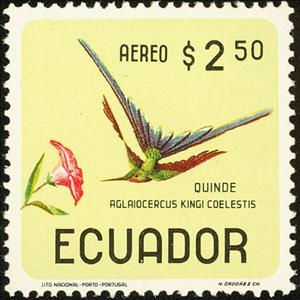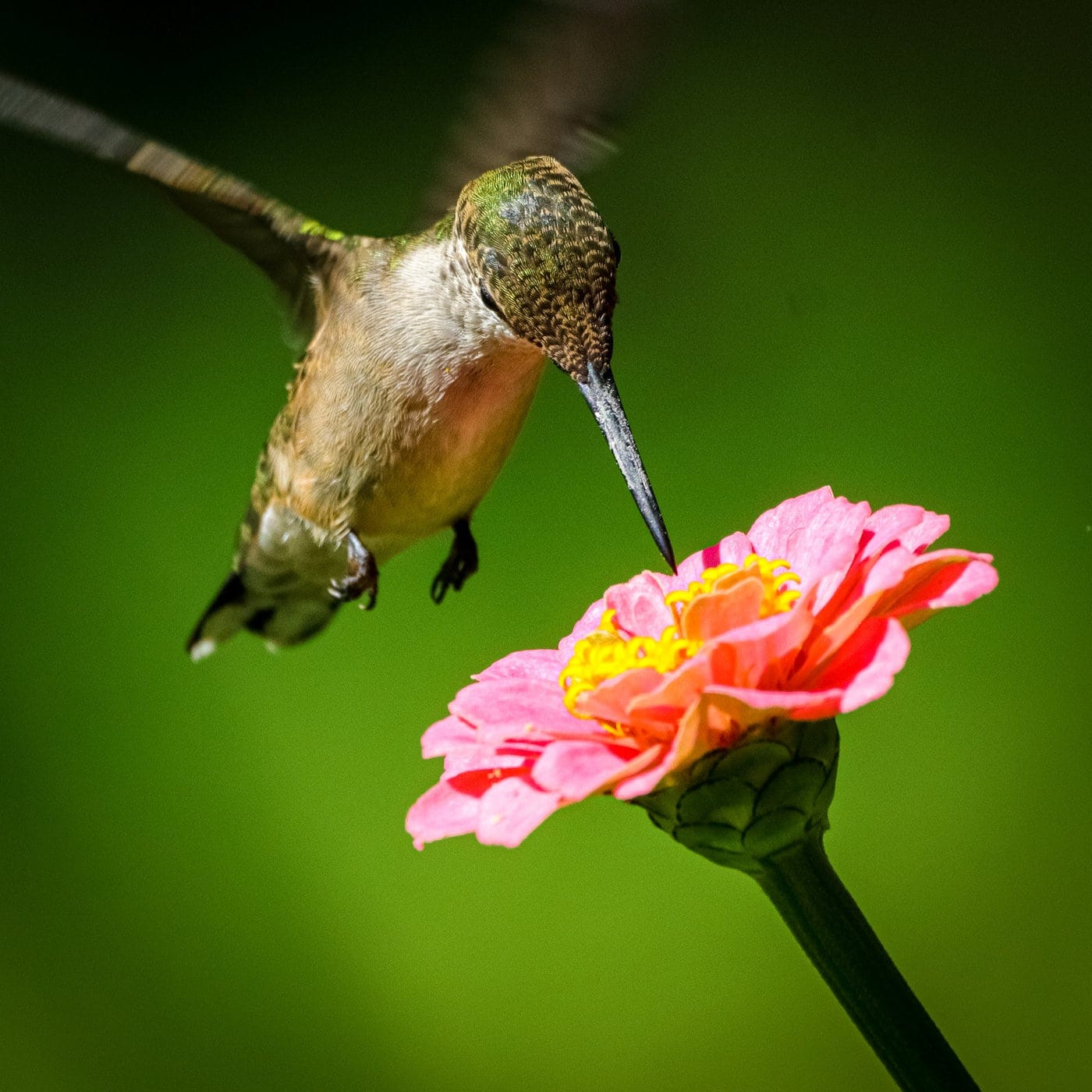Stamp: Violet-tailed Sylph (Aglaiocercus coelestis) (Ecuador 1966)
Violet-tailed Sylph (Aglaiocercus coelestis) (Ecuador 1966)
17 June (Ecuador ) within release Birds goes into circulation Stamp Violet-tailed Sylph (Aglaiocercus coelestis) face value 2.50 Ecuadorian sucre
| Stamp Violet-tailed Sylph (Aglaiocercus coelestis) in catalogues | |
|---|---|
| Michel: | Mi:EC 1238 |
Stamp is square format.
Also in the issue Birds:
- Stamp - Golden-headed Quetzal (Pharomachrus auriceps) face value 40;
- Stamp - Andean Motmot (Momotus aequatorialis) face value 50;
- Stamp - Paradise Tanager (Tangara chilensis) face value 60;
- Stamp - Wire-tailed Manakin (Pipra filicauda) face value 80;
- Stamp - Southern Yellow Grosbeak (Pheucticus chrysogaster) face value 1;
- Stamp - Black-headed Parrot (Pionites melanocephalus) face value 1.30;
- Stamp - Scarlet Tanager (Piranga olivacea) face value 1.50;
- Stamp - Sapphire Quail-Dove (Geotrygon saphirina) face value 2;
- Stamp - Violet-tailed Sylph (Aglaiocercus coelestis) face value 2.50;
- Stamp - Lemon-throated Barbet (Eubucco richardsoni) face value 3;
- Stamp - Yellow-tailed Oriole (Icterus mesomelas) face value 4;
- Stamp - Collared Puffbird (Bucco capensis) face value 10;
Stamp Violet-tailed Sylph (Aglaiocercus coelestis) it reflects the thematic directions:
A flower, sometimes known as a bloom or blossom, is the reproductive structure found in plants that are floral (plants of the division Magnoliophyta, also called angiosperms). The biological function of a flower is to effect reproduction, usually by providing a mechanism for the union of sperm with eggs. Flowers may facilitate outcrossing (fusion of sperm and eggs from different individuals in a population) or allow selfing (fusion of sperm and egg from the same flower). Some flowers produce diaspores without fertilization (parthenocarpy). Flowers contain sporangia and are the site where gametophytes develop. Many flowers have evolved to be attractive to animals, so as to cause them to be vectors for the transfer of pollen. After fertilization, the ovary of the flower develops into fruit containing seeds. In addition to facilitating the reproduction of flowering plants, flowers have long been admired and used by humans to beautify their environment, and also as objects of romance, ritual, religion, medicine and as a source of food.
Birds (Aves), a subgroup of Reptiles, are the last living examples of Dinosaurs. They are a group of endothermic vertebrates, characterised by feathers, toothless beaked jaws, the laying of hard-shelled eggs, a high metabolic rate, a four-chambered heart, and a strong yet lightweight skeleton. Birds live worldwide and range in size from the 5 cm (2 in) bee hummingbird to the 2.75 m (9 ft) ostrich. They rank as the class of tetrapods with the most living species, at approximately ten thousand, with more than half of these being passerines, sometimes known as perching birds. Birds are the closest living relatives of crocodilians.
Hummingbirds are birds native to the Americas and comprise the biological family Trochilidae. With approximately 366 species and 113 genera, they occur from Alaska to Tierra del Fuego, but most species are found in Central and South America. As of 2024, 21 hummingbird species are listed as endangered or critically endangered, with numerous species declining in population



